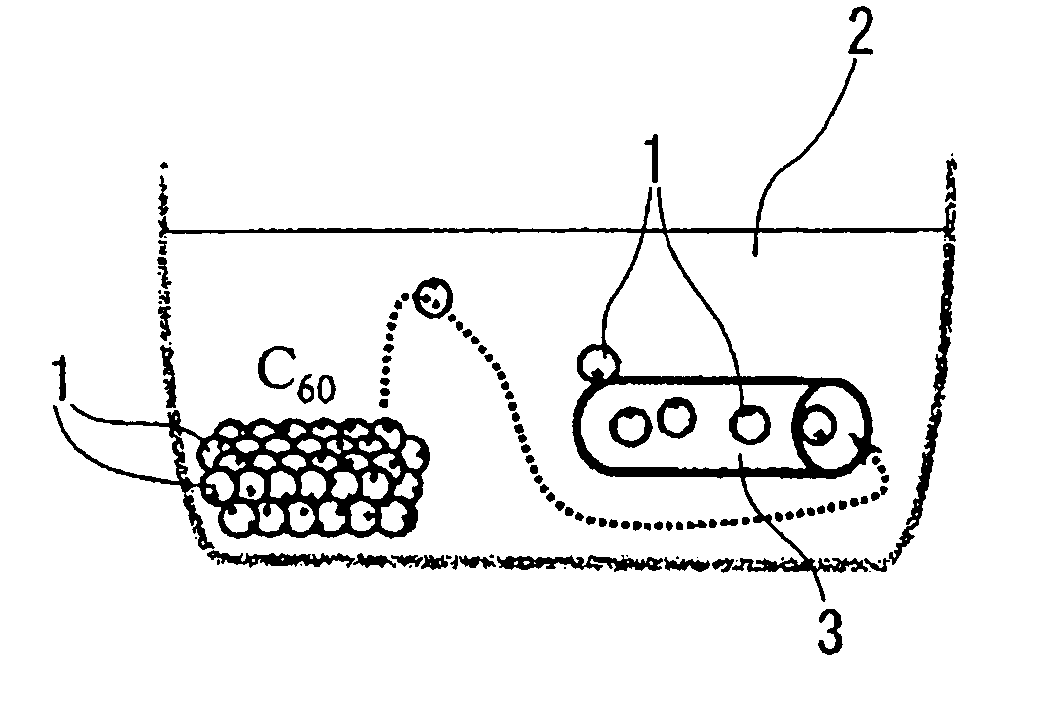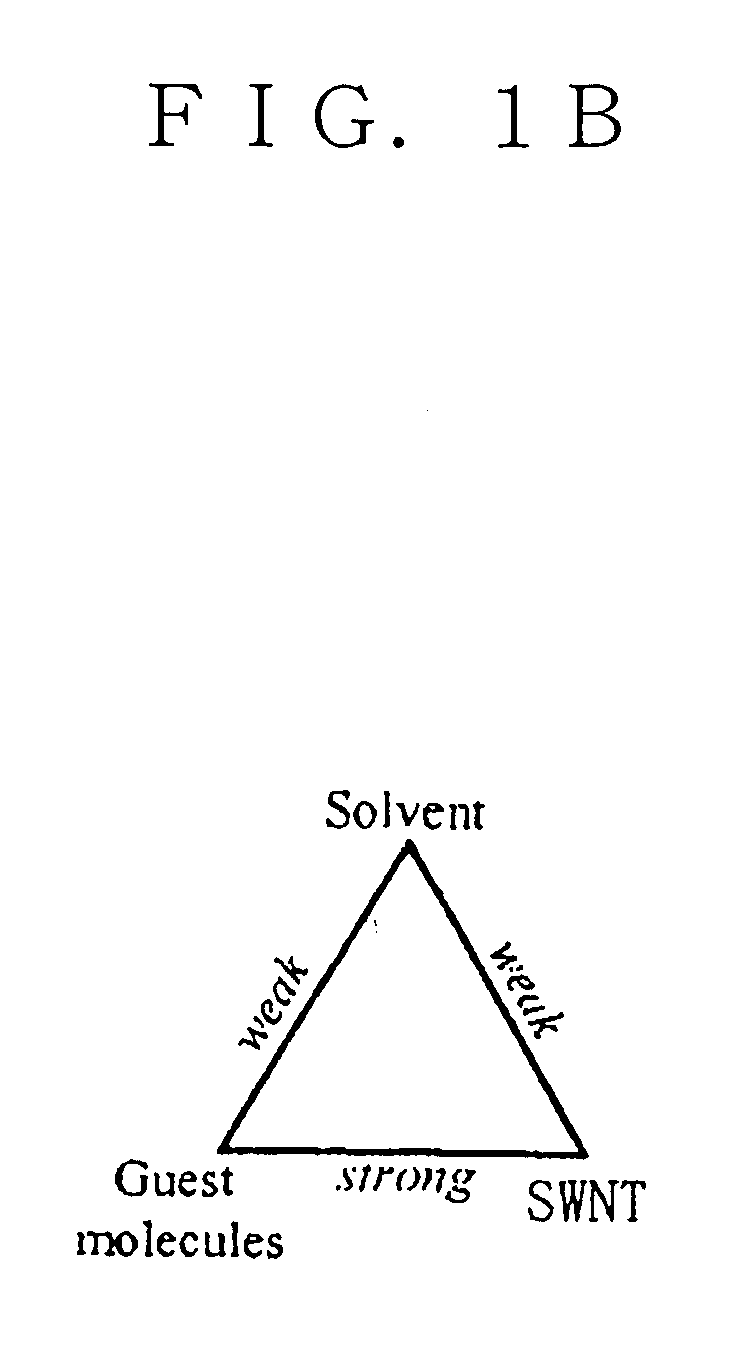Nano-extraction method and nano-condensation methods for guest molecules incorporation into single-wall carbon nanotube
a nano-condensation method and nano-extraction technology, applied in the direction of other chemical processes, fullerenes, separation processes, etc., can solve the problem of limited types of molecules to be incorporated into swnts
- Summary
- Abstract
- Description
- Claims
- Application Information
AI Technical Summary
Problems solved by technology
Method used
Image
Examples
example
Example 1
[0041] At first, the inventors heat-treated HiPco SWNTs (Carbon Nanotechnologies Incorporated) at 1780° C. in vacuum (1×10−6 Torr) for 5 hours, and further heat-treated them in an oxygen atmosphere at 570° C. for about to minutes. The 1780° C. heat treatment enlarged the tube diameters from 1 nm or less to 1 nm or more (about 50% of them had diameters larger than 2 nm), and the Fe content was reduced from about 30% to almost 0%. After the 570° C. oxygen-gas treatment, the tips of the SWNTs were open and holes had been pierced through the sidewalls.
[0042] In nano-extraction, guest molecules must have poor affinity to the solvent but a strong affinity to the SWNT. Also, the solvent must have a poor affinity to SWNT. As shown in FIG. 1(a), to demonstrate nano-extraction, the inventors put C60 crystallites (1) (1 mg) into ethanol (2) (10 ml), ultrasonicated (bath type) the solution for 3 minutes, added SWNTs (3) (1 mg), and this SWNT-C60-ethanol mixture for 1 day at room temp...
example 2
[0047] To prepare (C60)n@SWNTs through nano-condensation, as shown in FIG. 2(a) the inventors dropped about 10 μl of C60-toluene saturated solution (4) (2.8 mg / ml [17]) onto SWNTs (5) placed on a grid disk (6) (a TEM sample-holder) laid on filtration paper (7). The grid disk (6), which was about 3 mm in diameter and about 0.05 mm thick, was made of Cu and coated with a-C. The purpose of the filtration paper (7) was to suck up the excess solution as quickly as possible. After these processes, the inventors observed the specimens by TEM, and found that (C60)n@SWNTs had been obtained as shown in FIG. 4. The C60-molecule arrangements inside the tubes were the single-chain phase (FIGS. 4(a) and 4(b)) and the double-helix phase (FIG. 4(c)). The inventors could also see C60 molecules arranged in a tetragonal-like manner in FIG. 4(d), where the actual arrangement of the C60 molecules was not entirely clear. To show the importance of the filtration paper's rote in preparing (C60)n@SWNTs thro...
PUM
| Property | Measurement | Unit |
|---|---|---|
| diameters | aaaaa | aaaaa |
| solubility | aaaaa | aaaaa |
| thick | aaaaa | aaaaa |
Abstract
Description
Claims
Application Information
 Login to View More
Login to View More - R&D
- Intellectual Property
- Life Sciences
- Materials
- Tech Scout
- Unparalleled Data Quality
- Higher Quality Content
- 60% Fewer Hallucinations
Browse by: Latest US Patents, China's latest patents, Technical Efficacy Thesaurus, Application Domain, Technology Topic, Popular Technical Reports.
© 2025 PatSnap. All rights reserved.Legal|Privacy policy|Modern Slavery Act Transparency Statement|Sitemap|About US| Contact US: help@patsnap.com



